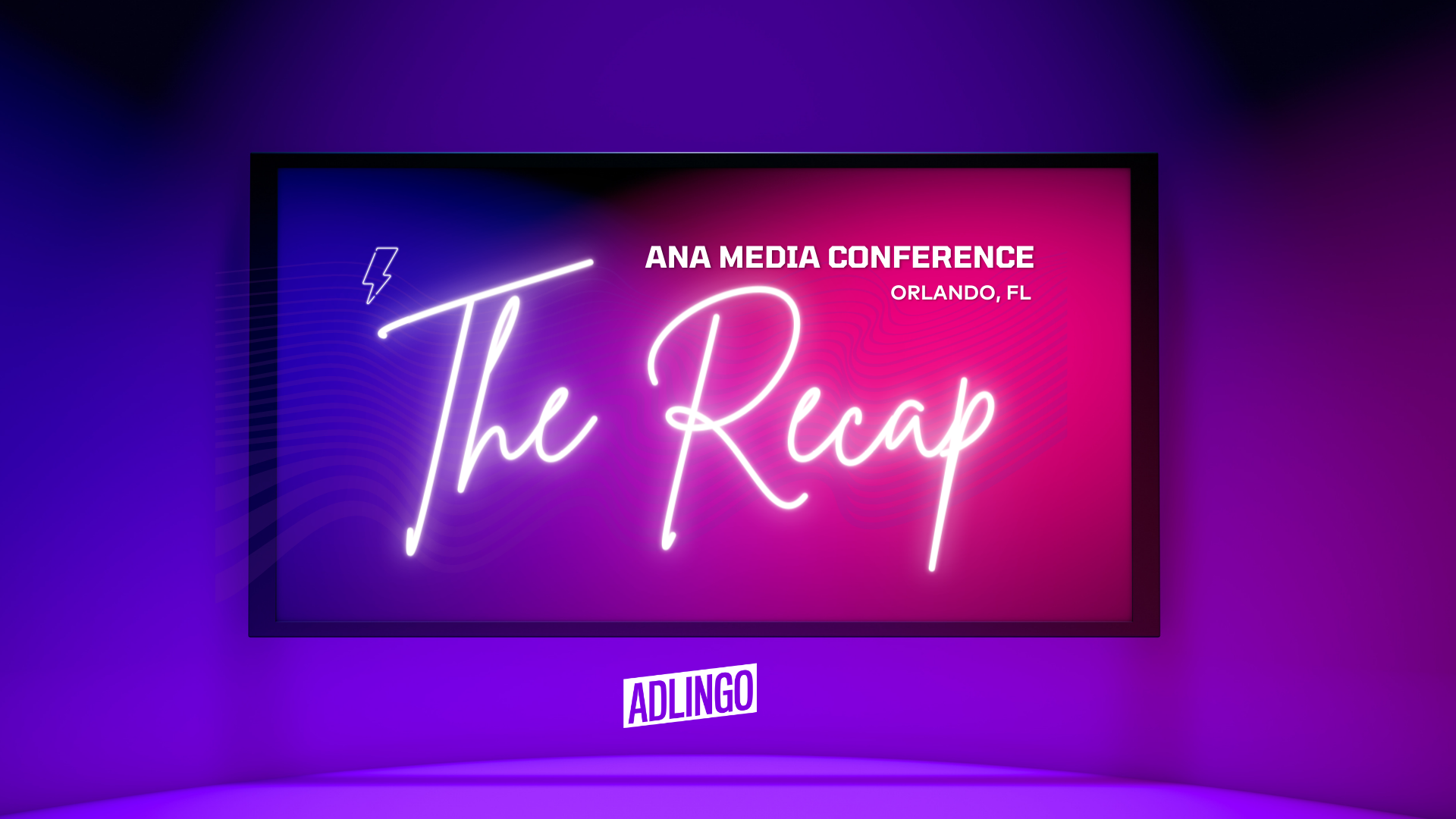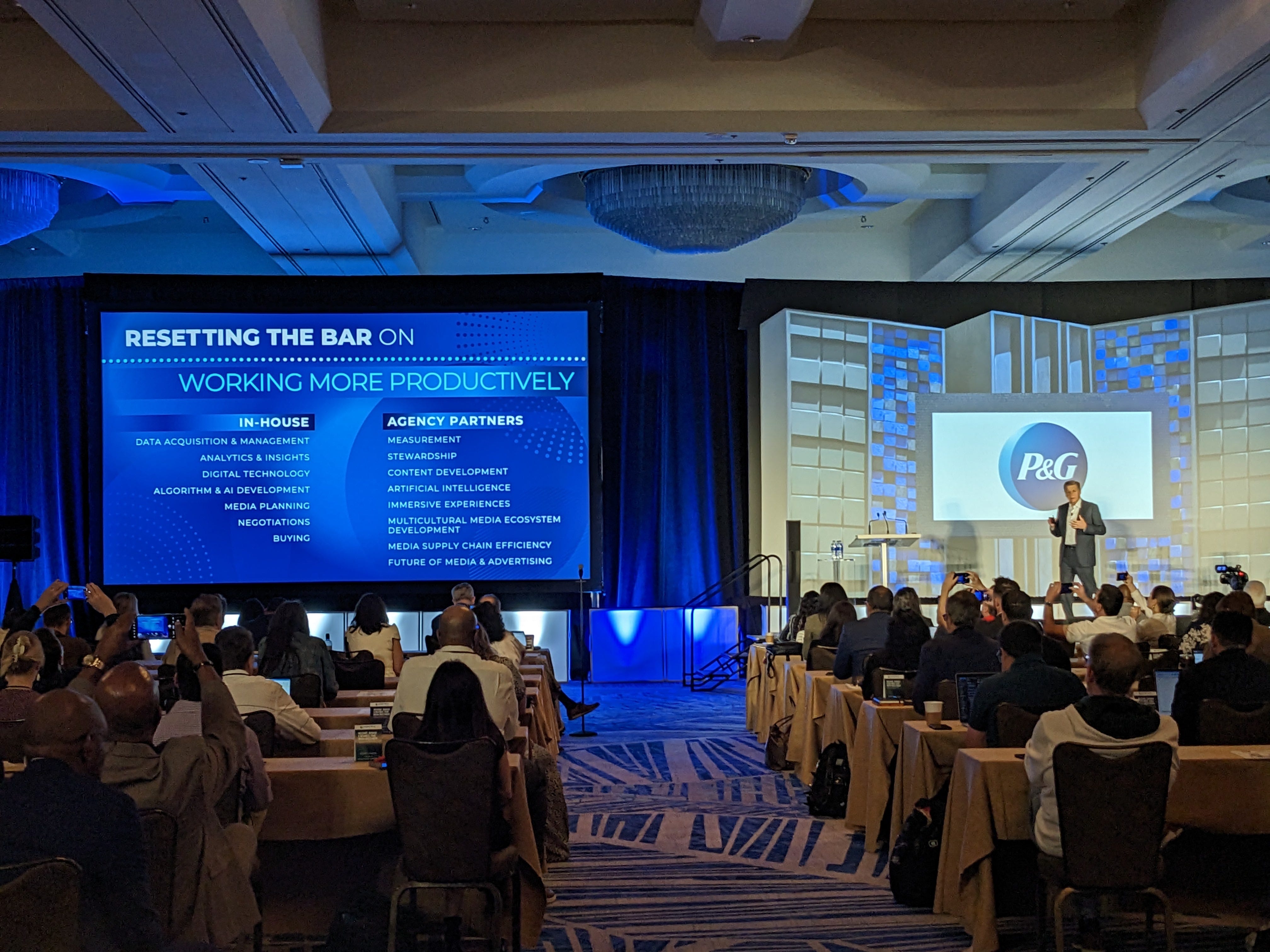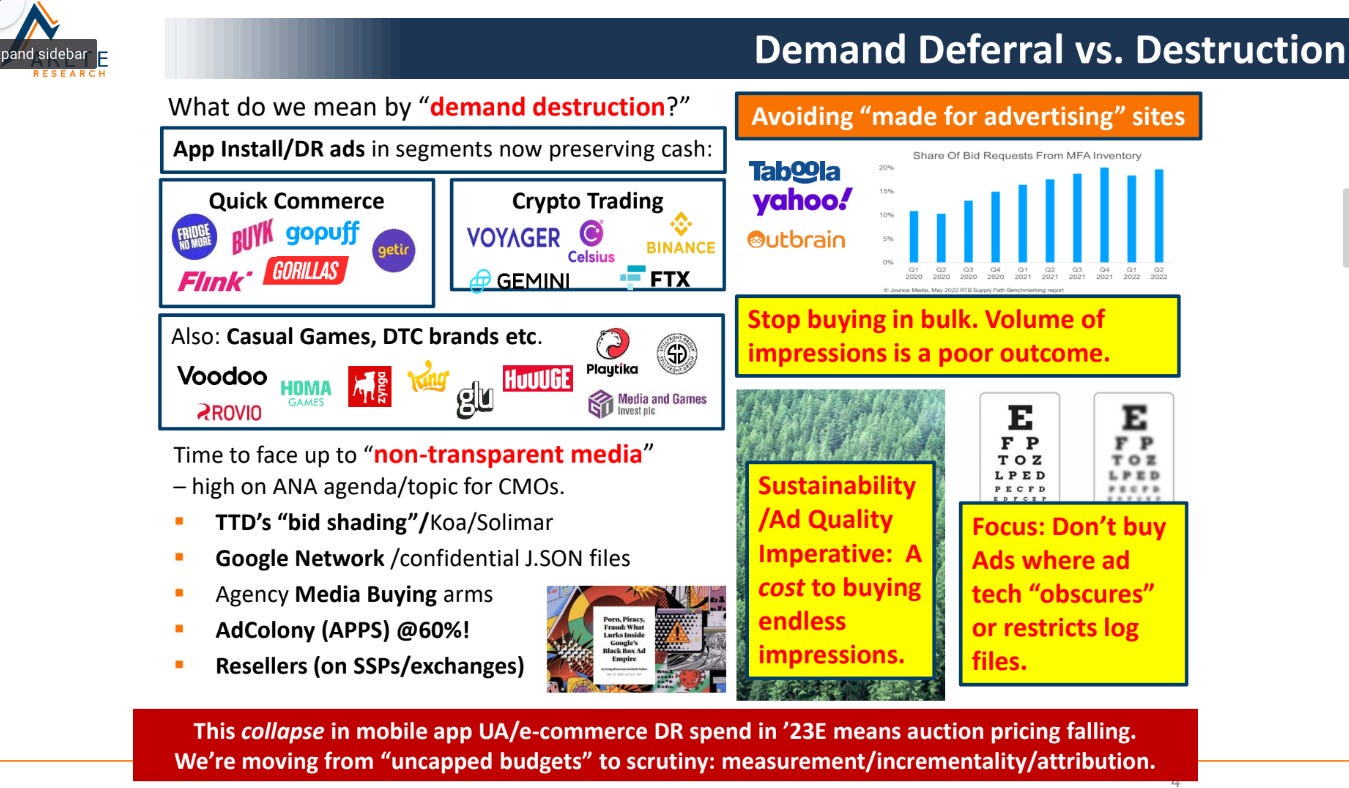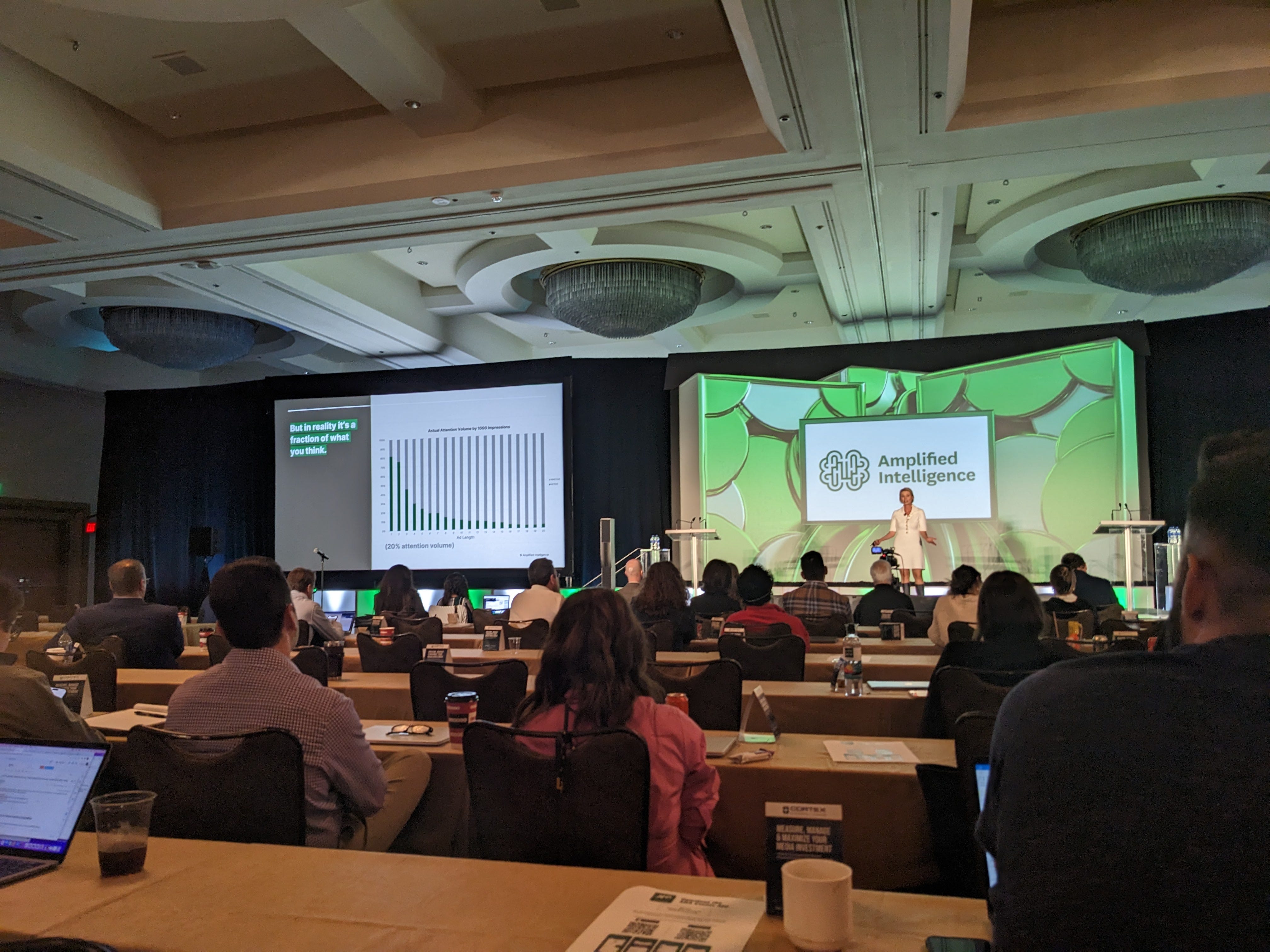
Chumboxes, Failed Currency, and the🐐
The ANA Media conference in Orlando, FL had the atmosphere of a college reunion with a light dash of antagonism. Here's AdLingo's recap of the event.
Unlike many industry events where there is a clear theme for the session, the ANA Media conference cast a wider net of topics including: artificial intelligence, diversity, in-housing, and retail media networks.
In between the more “show-and-tell” sessions, there were some very good presentations with actual data and 🔥 takes. More on those in a moment.
ANA Event Structure
If you’ve never attended an ANA event, here’s what you need to know.
The Association of National Advertisers represents (uhh) national advertisers as their main media-focused trade organization. They host roughly a dozen in-person conferences and a smattering of virtual events throughout the year.
The ANA Masters of Marketing event each fall is their mega event. Then there are a few significant tentpole events throughout the year, like Brand Masters, B2B Masters, Financial Management, etc. Then there are the far more bespoke events for specific topics like diversity, social, tech, and more.
The Media Conference last week had a bit more broad appeal because it touched on many media-adjacent topics like data, transparency, diversity, tech trends, procurement, and more. Consequently, it lacks a bit of the focus that is baked into the other events on the calendar but is also early enough in the year that it is good for setting the stage for what’s to come.
Top 3: ANA Conference Sessions
Here are my favorite sessions from the conference. To be fair, there were many great presentations not on my list. I am particularly fond of presenters who take contrarian positions and buck the common media wisdom. I also give automatic bonus points for content with actual facts, data, and attributable statistics.
🐐The Grand Pumbaa - Marc Pritchard

For something like 8+ years, Mark Pritchard, Chief Brand Officer at P&G, kicked off the ANA Media Conference festivities with his signature style of keynote.
His keynotes are so darn smooooooth. It shows the power of knowing your message and content inside and out, plus having an army of graphic designers and script writers at your beck and call. They are, in a word, perfection. 🤌🏻
Pritchard touched on many topics in his “resetting the bar” themed address. Most interesting was P&G’s approach to in-house expertise and resources versus external agencies. The photo above shows the way P&G allocates responsibilities.
He also claimed that P&G’s focus on “resonant” media + “relevant ads” drive 45% increases in creative effectiveness.
Above is an example Pritchard used from Old Spice in partnership with comedian Kevin Hart’s LOL Network.
💣 Arete Research - Richard Kramer

We need Richard on more stages. Period.
Richard Kramer leads an investment research firm called Aretate Research as an American based in London. He tells it like it is using these things called facts and data. Shocking.
There were about 6 hours of insights crammed into his 20-minute presentation. Kramer’s distinctive slideware style was on full display (sample above). Here are some of my favorite points.
End the chumbox silliness
“There is also something that I would like to see go away which is the 20% or so of bid requests on exchanges, which are made for advertising sites brought to you by the likes of Yahoo, Taboola, Outbrain and so forth,” said Kramer. “I mean, this is this is effectively a wasteful bulk of impressions that are being transacted for very little value.”
And for those that find themselves unfamiliar with the term “chumbucket,” here’s how Wikipedia defines it:
A chumbox or chumbucket is a form of online advertising that uses a grid of thumbnails and captions to drive traffic to other sites and webpages. This form of advertising is often associated with low quality clickbait links and articles.[1] The term derives from the fishing practice of "chumming", the use of fish meat as a lure for fish.
The market will face a reckoning this year
The advertising market will be down 8% in 2023. However, the ad agencies predict a 3-5% increase in spend. As Kramer correctly points out, the agencies are never in the business of telling clients to spend less.
“We have a forecast for advertising spend in 2023, which involves a recommend we think ad spend will fall around 8%, and slightly less in digital,” said Kramer. “There are four reasons for this. FX is the first one. The second one which is lapping inflation in ad pricing. But more importantly, there's demand destruction and deferred spending.”
The demand destruction comes from the multitude of brands that are simply not spending this year or might (frankly) not be in business anymore. Kramer pointed to the on-demand delivery services were on a massive customer acquisition tear during the pandemic and are all cutting costs now. There are also the crypto marketing budgets that have all gone bust.
He also pointed out that both CTV and Retail Media networks are not growth drivers for the market. They represent shifts in spending, not “new” money coming into the market.
And oh by the way, CTV is a $15B drop in a $600B digital media bucket. Plus, 70% of time-spent lives with just 6 media properties.
This post is public so feel free to share it, and it really helps grow the audience. Thanks buddy!
🤓 Amplified Intelligence - Dr. Karen Nelson-Field

Let that hard-core media science wash over you for a moment and bask in the knowledge of how delusional our industry’s KPIs are.
Dr. Neslson-Field flew up from her native Australia to lay down some f-a-c-t-s.
Nelson-Field’s research includes observational studies of real human panelists with big (ad tech) delivery data.
Let’s start with Nelson-Field’s assertion that viewability-based currencies have failed us.
Most ads that the MRC defines as “viewable” have zero attention paid to them.
Let that soak in for a moment.
For most advertisers, ~30% of the ads they buy never even have the opportunity to be seen by a consumer based on the MRC definitions of a viewable ad.
Of those that do have the opportunity to be seen, only a fraction get any attention (eyeballs).
During the first 10 seconds of ad exposure, there’s a 1 in 3 chance that someone will look at the ad.
Yes, please tell me again how those 300x250 banner ads at 3 am drive incremental vehicle sales. 🤦
If you take the logical next step and ask how this impacts actual “reach,” you are headed in the right direction. Can we honestly regard our existing reach reporting metrics as legitimate if only a fraction of people sees the ads?
The number of consumers we served ads to — which is really what we look at today— is an entirely different thing than the number of people we actually reached.
What comes next?
It is fantastic that our industry has emerged from our pandemic bunkers. It is great to connect in person once again.
Better still, many of us have developed some hot takes that I look forward to seeing on stages all over the market.
See you in Phoenix at the ANA Financial Management Conference April 30 - May 3.
What I’m Reading


This is a big overstep by Microsoft imo
— Chris Frantz (@frantzfries) 11:41 PM ∙ Feb 21, 2023
They are injecting ads *into the Google Chrome download page* pushing their own browser 🫠
This should not be ok
— Greg Stellato (@gstellato25) 3:08 AM ∙ Feb 22, 2023
Used car prices will likely go higher than anyone expects.
— CarDealershipGuy (@GuyDealership) 12:30 AM ∙ Feb 23, 2023
Here's why:
Dealers are currently selling more cars than they're buying.
They can't replace their inventory because there isn't enough supply in the market...
Support Independence
Getting the FREE AdLingo newsletter supports independent commentary, education, and insight into digital advertising.









